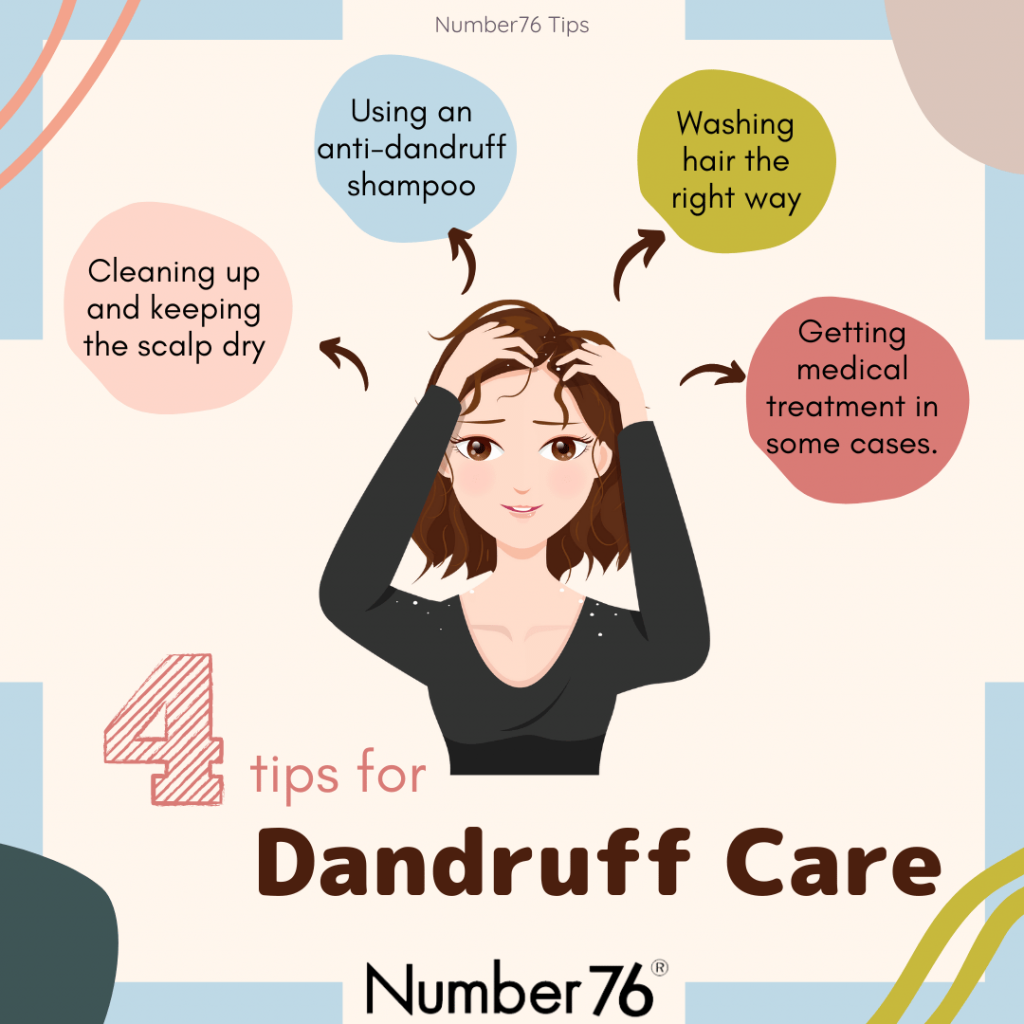
- Cleaning up and keeping the scalp dry:
- Regular washing: It’s important to wash your hair regularly to remove excess oil, dirt, and dead skin cells from the scalp, which can contribute to dandruff. However, avoid overwashing as it can strip the scalp of its natural oils, leading to dryness.
- Use a gentle shampoo: Choose a mild, pH-balanced shampoo that is specifically formulated for dandruff-prone scalps. Harsh shampoos can irritate the scalp and exacerbate dandruff.
- Rinse thoroughly: Ensure that you rinse your hair and scalp thoroughly after shampooing to remove any residual product, which can build up and contribute to dandruff.
- Dry thoroughly: After washing your hair, gently pat it dry with a towel and allow it to air dry completely. Avoid using excessive heat from hair dryers, as it can further dry out the scalp.
- Using an anti-dandruff shampoo:
- Look for active ingredients: Anti-dandruff shampoos typically contain active ingredients such as zinc pyrithione, selenium sulfide, ketoconazole, or coal tar, which help to reduce the fungus or bacteria associated with dandruff.
- Follow instructions: Use the anti-dandruff shampoo according to the instructions provided on the packaging. Some shampoos may require daily use initially, while others may be used less frequently for maintenance.
- Be patient: It may take some time to see results with an anti-dandruff shampoo, so be patient and consistent with its use. If you don’t see improvement after several weeks, consider trying a different shampoo or consulting a dermatologist for further guidance.
- Washing hair the right way:
- Gentle cleansing: Avoid scrubbing the scalp too vigorously, as this can irritate the skin and worsen dandruff. Instead, use your fingertips to massage the shampoo into the scalp gently, without using your fingernails.
- Avoid hot water: Hot water can strip the scalp of its natural oils, leading to dryness and exacerbating dandruff. Instead, use lukewarm water to wash your hair and scalp, and finish with a cool rinse to help close the hair cuticle and seal in moisture.
- Consider pre-shampoo treatments: Before shampooing, you can apply a pre-shampoo treatment such as coconut oil or olive oil to the scalp and hair to help moisturize and soften flakes, making them easier to remove during washing.
- Getting medical treatment in some cases:
- Persistent dandruff: If dandruff persists despite using over-the-counter treatments, or if it is accompanied by severe itching, redness, or inflammation, it’s important to consult a dermatologist for further evaluation and treatment.
- Prescription medications: A dermatologist may prescribe medicated shampoos, topical corticosteroids, antifungal creams, or oral medications to help control severe or resistant dandruff and underlying skin conditions.
- Underlying conditions: In some cases, dandruff may be a symptom of an underlying skin condition such as seborrheic dermatitis, psoriasis, or eczema. Treating the underlying condition is essential for managing dandruff effectively.
By following these guidelines and seeking appropriate medical treatment when necessary, you can effectively manage dandruff and maintain a healthy scalp.